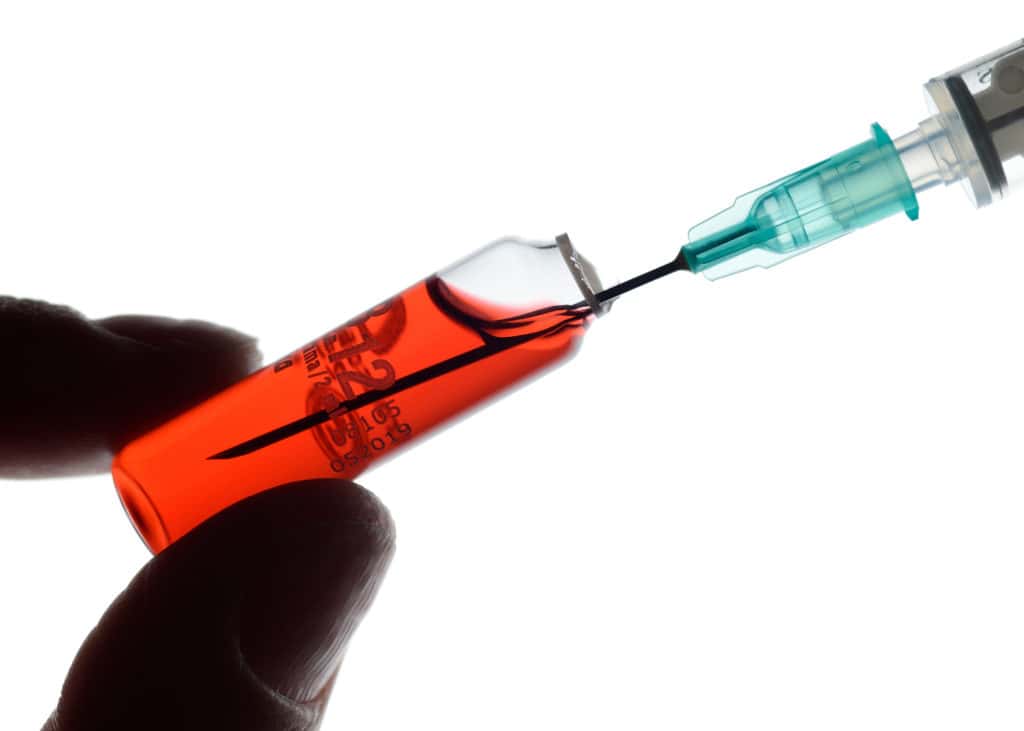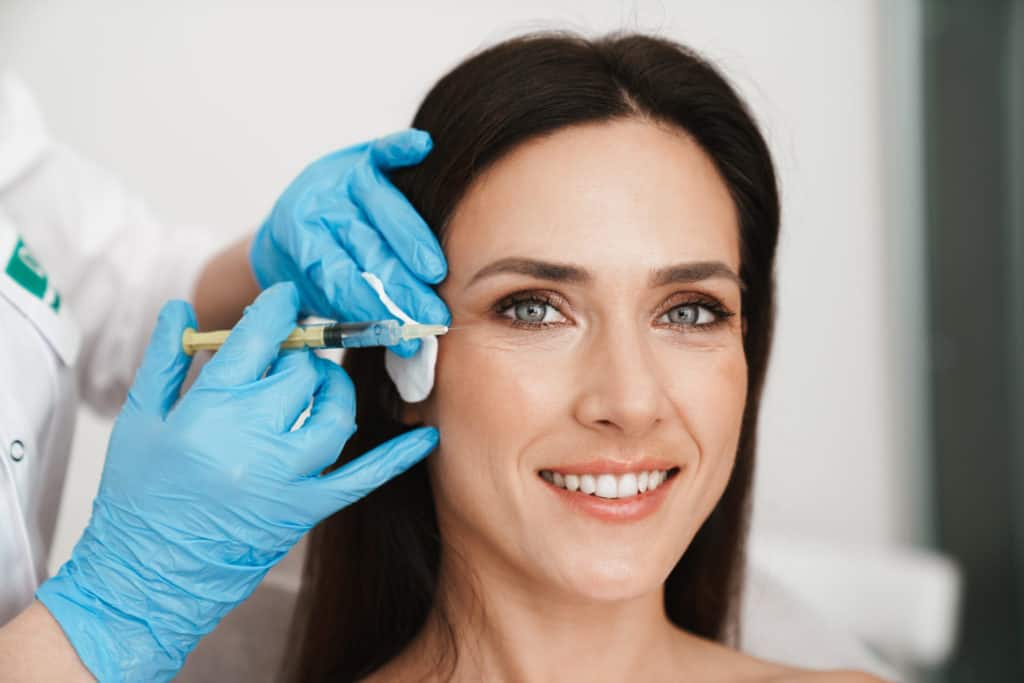Hyperhidrosis is a condition when excessive sweating is caused by a sympathetic nervous system problem. While it’s not just a matter of discomfort, it can also be embarrassing, upsetting, and at times, causing social isolation. Hyperhidrosis treatments are ways to improve the quality of life, especially when sweating becomes unbearable.
What Are The Symptoms Of Hyperhidrosis?
Hyperhidrosis symptoms typically appear in childhood or puberty and continue into adulthood. The exact causes are unknown. While obesity or increased thyroid function may play a role, certain situations or substances can overstimulate the nervous system.
In fact, these can cause excessive sweating and include:
- Anxiety
- Pain
- Tension and stress
- Exercise
- Caffeine
- Nicotine
How Can Hyperhidrosis Be Diagnosed?
Only a licensed healthcare professional can diagnose hyperhidrosis by asking about medical history and symptoms. Patients may also need a physical exam or tests to evaluate the cause of the symptoms further.
- Lab tests. The healthcare provider may recommend blood, urine, or other lab tests to see if sweating is caused by another medical condition, like an overactive thyroid (hyperthyroidism) or low blood sugar (hypoglycemia).
- Sweat tests. The healthcare provider may also need a test that pinpoints the sweating areas and evaluates how severe the condition is. Two such tests are an iodine-starch test and a sweat test.
What Are The Treatments For Hyperhidrosis?
Depending on the type of hyperhidrosis, treatments can vary where excessive sweating occurs in the body. The dermatologist also considers other factors and overall health. Moreover, the following treatments are used to help patients control hyperhidrosis, which includes:
Surgical Treatments:
The Updated T2 Sympathectomy
The T2 sympathectomy done to help treat hyperhidrosis has recently been updated to improve it even more. The reason for this new procedure is to spare the T2 nerve trunk if that is possible. This is because the T2 nerve trunk sympathectomy means that patients are more likely to suffer from the side effect of severe compensatory sweating.
The leading doctors who perform these kind of procedures now recommend that different nerve trunks are clamped because they are thinking of the health post-op. This new procedure is more effective and means that the nerve trunks are clamped rather than eradicated.
The different nerves control different body parts prone to hyperhidrosis, so it is of the utmost importance that the correct nerves are operated upon. Here is more information about it.
- T1, the first thoracic trunk and ganglion, controls the sweat in the face, hands, and underarms. Interestingly, the first ganglion controls the eyelid and pupil response, which should also be spared during surgery. If it is damaged, this could result in droopy eyelids (Horner’s syndrome.)
- T2, the second trunk, is what the sweat response is controlled by in the hands, face, and facial blushing. When this nerve is clamped, it helps to control the sweating and blush in the face, which makes it such a popular procedure. It also solves the issue of hand sweating but can make hands overly dry.
- T3, the third thoracic trunk, controls facial and hand sweating.
- T4, the fourth thoracic trunk, controls hand sweating.
- T5, the fifth thoracic trunk, controls underarm sweating.
Endoscopic Transthoracic Sympathectomy (ETS)
Science keeps improving, and developments meant that ETS using smaller instruments could soon be performed to treat the sympathetic nerves using clips and ensure even more precise procedures. In fact, this is safer and means fewer side effects for patients. The procedure using metallic clips is called Endoscopic Transthoracic Sympathetic Blockade (ETB).
The ETS process is generally irreversible and costly, and any potential gains in a reduction in sweat on palms are often more than compensated by sweating on other body parts. Compensatory sweating is excessive on the back, chest, abdomen, legs, face, and/or buttocks due to ETS surgery.
Laser Surgery For Hyperhidrosis
This is another surgical option for treating armpit sweating. The IHS explains that a laser is passed under the skin through tiny incisions in the underarm skin to heat up and destroy sweat glands. The procedure generally takes less than an hour to complete.
Data on the safety and effectiveness of laser treatment for armpit sweating is limited, consisting primarily of case reports involving a small number of patients, says IHS. A 2018 study in Lasers in Medical Science concludes that large, randomized trials of laser treatment for hyperhidrosis are needed. However, some doctors do offer the treatment.
Non-Surgical Treatments:
Antiperspirants
As the most affordable one, this may be the first treatment a dermatologist recommends. When directly applied, an antiperspirant can be effective. However, a regular or clinical-strength antiperspirant may be recommended by a dermatologist for some patients who may also need a stronger antiperspirant and a prescription for one.
Iontophoresis (The No-Sweat Machine)
This may be an option if excessive sweating affects the hands, feet, or both areas. This treatment can be used at home, requiring immersing the hands or feet in a shallow pan of tap water. While doing this, a medical device sends a low-voltage current through the water.
Botulinum Toxin Injections
The dermatologist can inject a weak form of this medicine into the underarms to temporarily block a chemical in the body, which stimulates the sweat glands. To treat excessive sweating, a patient must have very tiny amounts injected in many underarms areas. In fact, the FDA (Food and Drug Administration) has approved Botox injections for the underarms.
In fact, some research studies suggest that botulinum toxin injections may be effective for other body areas. In addition, it may help post-menopausal women who sweat excessively on the head, hands, and feet as part of the symptoms.
Prescription Cloth Wipes
For people with excessive underarm sweating and 9 years of age, prescription cloth wipes have been approved for treatment by the United States Food and Drug Administration. In fact, they are individually wrapped cloths that contain an active ingredient, glycopyrronium tosylate, which can reduce underarm sweating.
Prescription Medicine
This is another treatment that includes prescription medicine that temporarily prevents them from sweating. These medicines work throughout the body. Moreover, these medicines prevent the sweat glands from working.
The Bottom Line
Many find a treatment by seeing a dermatologist who can effectively help control excessive sweating and also help improve their quality of life. ReNu Aesthetics & Wellness offers Botox injections, a new treatment option for people with hyperhidrosis. At ReNu Aesthetics & Wellness MedSpa, you’ll find exceptional patient-centric care to discuss your medical history and goals and determine the most effective treatment.



